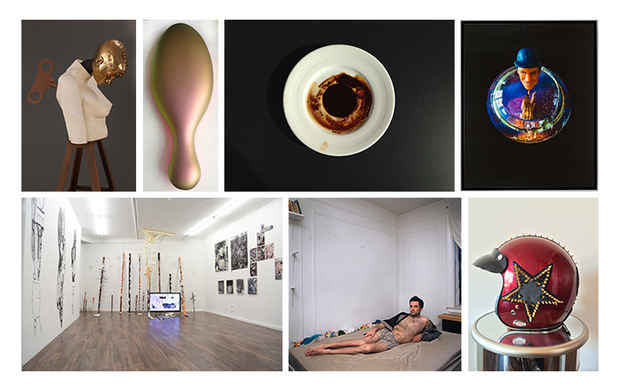“Illusive Reality” Exhiition
Helac Fine Art

This event has ended.
Helac Fine Art announces “Illusive Reality”, a group show featuring Andreas Bechtler, Regine Bechtler, Simone B., Marta Jovanovic, Hrvoje Slovenc, TARWUK (Ivana Vuksic & Bruno Pogacnik Wukodrakula), and Christa Winter. What unites these artists together is an interest in the fantastical aspects inherent in everyday life through a range of media, from photography to installation to performance.
Either through controlled disruptions or appropriations of the everyday as a transformative device, each artist alters the assumptions of daily living and invites viewers to construct their own experiences from scenes that don’t quite seem to conform to reality. Marta Jovanovic concerns herself with the performative aspects of daily ritual and cultural tradition. For her new work Clairvoyant (2014), she will be present at the gallery each day. In a simulated living room, she will continue the Serbian tradition of reading coffee as a means of predicting the future, according greater significance to folklore. Jovanovic evokes the myriad historical events that have transpired over coffee, from planning wars to creating great works of art, conjuring both the power to destroy and the power to create. Similarly, Hrvoje Slovenc finds the surreal aspects in domestic scenes. In Portrait #3 (2013), Slovenc captures a friend in his bedroom, posed as a classical statue. Within the intimate space of the bedroom, Slovenc draws attention to the incongruity between the subject’s lack of self-awareness of the protruding stuffed animals and the viewer’s perception of these clues to the subject’s identity.
In other works, the viewer’s connection to existing reality acts as a starting point for each piece. Imagined worlds rely on objects appropriated from the known. In his photographs, Andreas Bechtler uses nature to construct a psychological dreamscape that is often suggestive as elements of human existence permeate the works. He moves the camera with an open shutter to create streaks of vibrant color in each work. Tiny figurines are placed in eroticized “found” environments such as in Through the Looking Glass (2012), a digital image printed on canvas. Through an installation that merges reality with constructed elements TARWUK (Ivana Vuksic and Bruno Pogacnik Wukodrakula) seeks to dissolve the boundaries between human memory and invented reality. The convergence of materials creates a new language in which to perceive the traditional white cube space. In Filth and Loading in Chinatown, 2014, TARWUK incorporates traditional sculptural techniques and a wide range of computer software to examine the convergence of digital and physical realities, where conglomerated layers of virtual realities overlap with the physical ones, merging the artificial and the real to suggest a complex network of data exchange.
Simone B.’s vibrant helmets rethink a utilitarian object meant to protect. For B., the helmets evoke the dual nature of the art object: as commodity and collectible. Using metals, leather, and other decorative elements in The Next Level (2014), B. both embraces and fetishizes motorcycle culture through evocative color, rough materials and the unicorn motif, equating the helmet with a crown that elevates the status of the rider. She repurposes each helmet as a unique object that simultaneously attracts and averts, protects and destroys, with metallic spikes that protrude from this signifier of safety. Regine Bechtler’s Protection (2013) subverts the traditional human form. As if revealing the scaffolding of the body, Bechtler utilizes an array of materials, from steel to stoneware to create a surreal vision of the human condition. A striking visual metaphor, the beauty of the flowers belies their ability to obscure, a theme echoed by an eerie cage. Christa Winter’s amorphous shapes, reminiscent of biological organisms, activate wall space through their trippy colors that at once find their basis in nature and yet do not allude to any immediately recognizable object. In Pirrilone (1999), the fluidity of the wood and asymmetrical shape engage with natural dyes and acrylic paint that take advantage of natural chemical processes.
Media
Schedule
from October 23, 2014 to November 22, 2014
Opening Reception on 2014-10-23 from 18:00 to 20:00